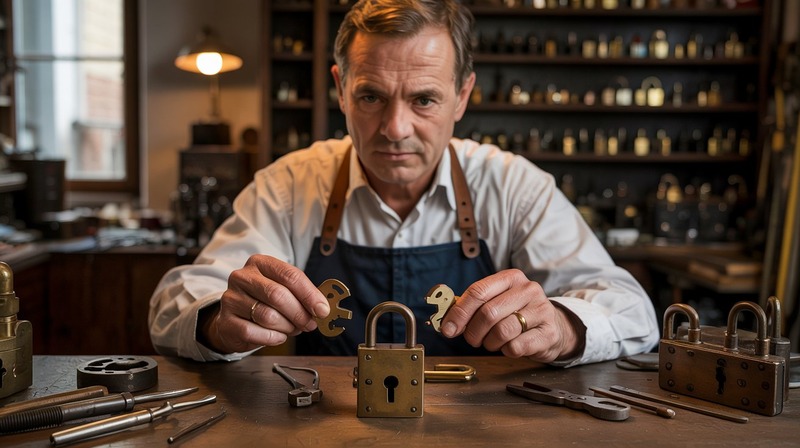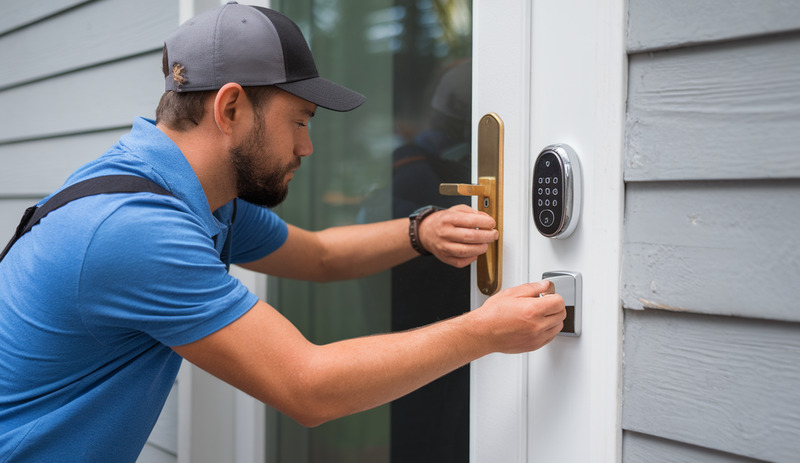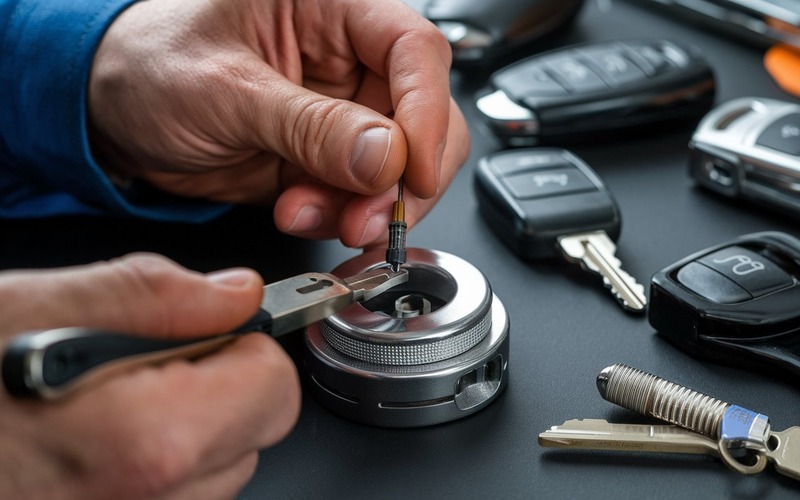
Picture this: You’ve just inherited your grandmother’s beautiful 100-year-old cabinet. It’s gorgeous – rich mahogany wood, intricate carved details, and one big problem. The key is nowhere to be found. You’ve searched every drawer, every old jewelry box, and come up empty. Now what?
Most people assume antique locks are impossible to unlock or replace keys for. The good news? Professional locksmiths have some pretty amazing tricks up their sleeves. This guide will walk you through exactly how experts can help you save that precious piece of history.
Can Modern Locksmiths Actually Work with Antique Locks?
Not every locksmith can manage the delicate antique work of lock restoration. Let’s step into the specialized world of vintage lock preservation. These aren’t your standard modern padlocks or home security systems—antique locks require a completely different set of skills and expertise.
Restoration Specialists: Historians of Lockcraft
Genuine restoration specialists are essentially historians with a penchant for detective work. They require a close familiarity with the metalworking trade, long-forgotten historical manufacturing techniques, and the kind of intricate mechanical design that most standard locks-even those more than a century old-—do not showcase. Yet some might argue that such skills are in danger of going the way of the live lock. After all, how many of us have even seen a working 150-year-old lock?
Methods Locksmiths Use to Recreate Antique Keys
The art of recreating an antique key—more art than science, to be sure—is something that most people do not realize. Techniques used by the specialists in historical restoration who perform this service might surprise you. For instance, one common method of Key Impressioning involves using very bright lights to better reveal the ins and outs of the internal mechanism of even a poorly made original. Once a precise replica is made, it is oftentimes only for show; the lock it originally went to, having long since been destroyed, is no longer around.
Unlocking a lock can nearly become an archeological dig. Experts in lock-decrypting use specialized measuring tools that can register minute changes in metal wear and the original key profile. They may employ digital micrometers, specialized files, and even historical reference guides to decipher the exact manufacturing standards of a certain era.
You May Like To Read: How Much Does It Cost To Install Electronic Locks?
When Replacement Might Be Your Best Option
At times, preserving history means comprehending when to retreat. Not all antique locks are good candidates for restoration, nor should they be. If the interior mechanisms are so compromised that they can’t be made whole again or if they’re missing essential bits, then a mindful replacement is probably the best bet for keeping the lock functional without tinkering with its history. That’s the part too few people understand—that replacement done correctly maintains the integrity of the artifact.
Collaborating with collectors and restoration specialists guarantees that any substitute maintains the lock’s original aesthetic appeal and historical relevance. It isn’t merely a matter of rendering something operational; it’s a question of honoring its history.
Potential Challenges with Very Old Locks
Unique metallurgical mysteries stud antique locks. Different historical periods employed different metal compositions—utterly varied and far more than just a rusting relict of the past—that can dramatically impact restoration difficulty. If you were to cut open a lock from Victorian England and then do a side-by-side comparo with an American colonial-era lock, you might be struck by how utterly different their internal structures are.
Tested and true methods of repair are often used by locksmiths when they tackle old, broken-down locks and keys. They might have to re-create tiny parts that no longer exist—like intricate springs, pins, and levers—that together allow the lock and key to do what they were originally intended to do. It’s a kind of hand-worked mechanical alchemy, of a very high order.
Cost Considerations for Antique Key Restoration
Thus, what is the real price of professional restoration? It can vary enormously according to the lock’s vintage, condition, and historical importance. A basic key reproduction might set you back $100 to $300, whereas full-blown restoration of a rare or intricate lock could well run $1,000 or more.
Cost is impacted by the condition of the lock, its historical rarity, the amount of research required, and the specialized skills necessary to do the work. Enthusiasts should get multiple expert assessments and understand very well what is actually needed in the way of restoration to keep costs down.
In the end, working with old locks takes more than just technical ability. It requires a deep respect for historical craftsmanship and a preservationist’s almost archaeological approach to keeping the mechanisms intact. For those in the local area looking for expert restoration, professional help is just a call away.
Final Words
Your antique lock doesn’t have to remain a mysterious, unopenable puzzle. With the right locksmith and a bit of patience, you can unlock (literally!) the stories hidden behind these incredible pieces of history. Don’t let a missing key stop you from enjoying your treasured item.
Ready to bring your antique piece back to life? Research local locksmiths who specialize in historical restoration and schedule a consultation. Your vintage treasure is waiting to be rediscovered.



